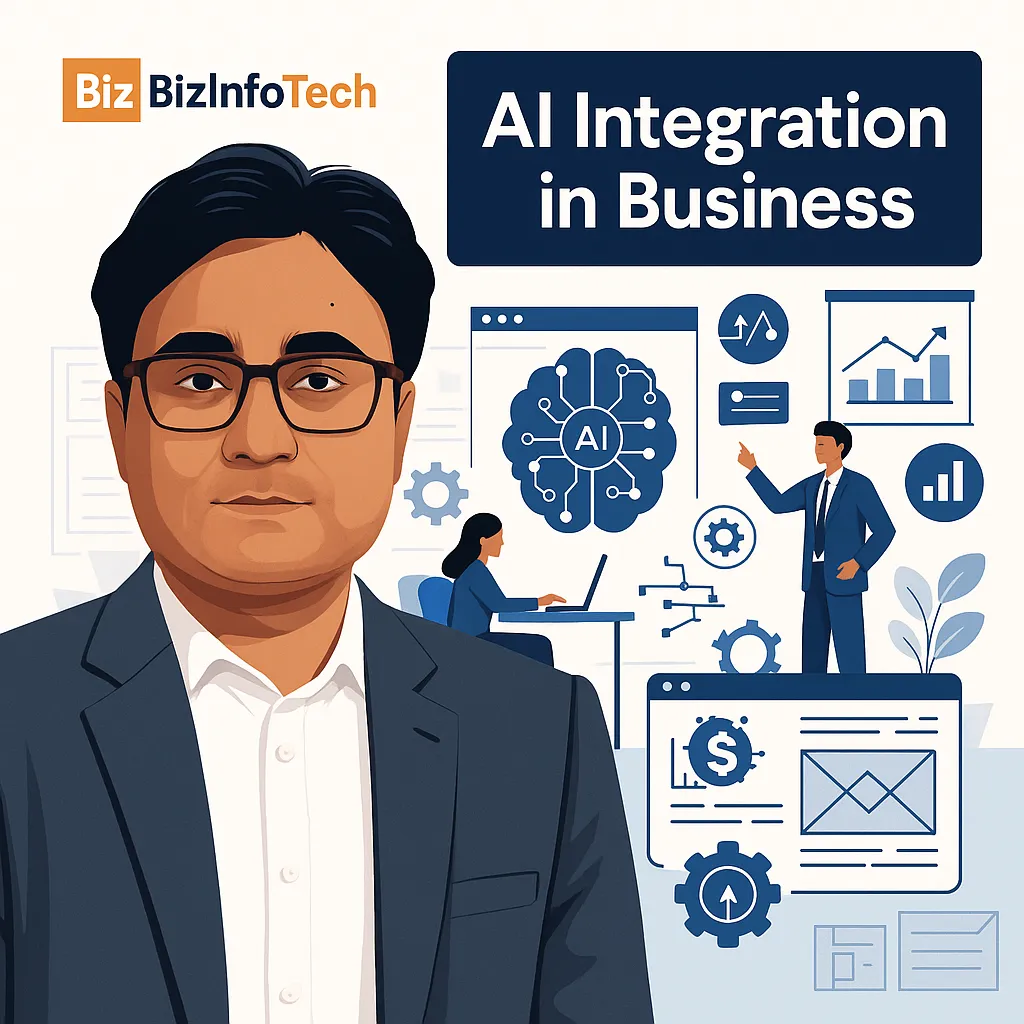Introduction
Artificial Intelligence (AI) is transforming how businesses operate — from automating tasks to enhancing customer experiences and predicting market trends. While the opportunities are vast, integrating AI into business operations comes with practical, ethical, and technical challenges. This article explores both sides of the AI equation for companies aiming to innovate responsibly.What is AI Integration?
- AI integration refers to embedding artificial intelligence tools into a business's existing workflows, software, and decision-making processes.
- This includes automation, natural language processing (NLP), machine learning (ML), data analytics, and intelligent decision systems.
Opportunities of AI in Business
1. Enhanced Decision Making
- AI systems analyze large volumes of data quickly and suggest data-backed recommendations.
- Predictive analytics improves forecasting accuracy and strategic planning.
2. Automation of Repetitive Tasks
- Routine operations such as data entry, email sorting, and customer query resolution can be automated with AI bots and RPA (robotic process automation).
- This reduces human error and frees up resources for more strategic work.
3. Personalized Customer Experience
- AI can tailor product recommendations, email campaigns, and chatbot conversations based on user behavior and preferences.
4. Cost Efficiency
- AI reduces the need for human intervention in low-value tasks, cutting down operational costs.
- Predictive maintenance in manufacturing and logistics reduces downtime and extends equipment life.
5. Talent Management
- AI tools help in recruitment by screening resumes and predicting candidate suitability.
- Learning systems can personalize employee training and development paths.
Challenges of AI Integration
1. Data Quality and Availability
- AI depends on clean, well-structured data. Poor data can lead to inaccurate outcomes.
2. Skill Gaps
- Many organizations lack employees with the necessary skills in AI, data science, or algorithm development.
3. High Implementation Cost
- Initial AI adoption requires investment in software, hardware, and talent.
4. Ethical and Legal Concerns
- AI systems can inadvertently learn bias, leading to unfair decisions.
- Data privacy, transparency, and accountability are key compliance challenges.
5. Resistance to Change
- Employees may fear job displacement or mistrust AI decisions.
- Organizational culture must shift to embrace AI as a collaborative tool, not a replacement.
Best Practices for Successful AI Integration
- Start Small: Begin with pilot projects in one department or process.
- Ensure Data Readiness: Clean and organize data before training AI models.
- Train Your Team: Upskill employees on how to work with AI tools.
- Partner with Experts: Collaborate with AI service providers or consultants.
- Maintain Transparency: Build systems that explain how decisions are made.
Conclusion
- AI is revolutionizing business across all sectors — but adoption must be strategic and human-centered.
- By balancing opportunities with challenges, businesses can integrate AI in a way that drives innovation, efficiency, and growth without compromising ethics or trust.
